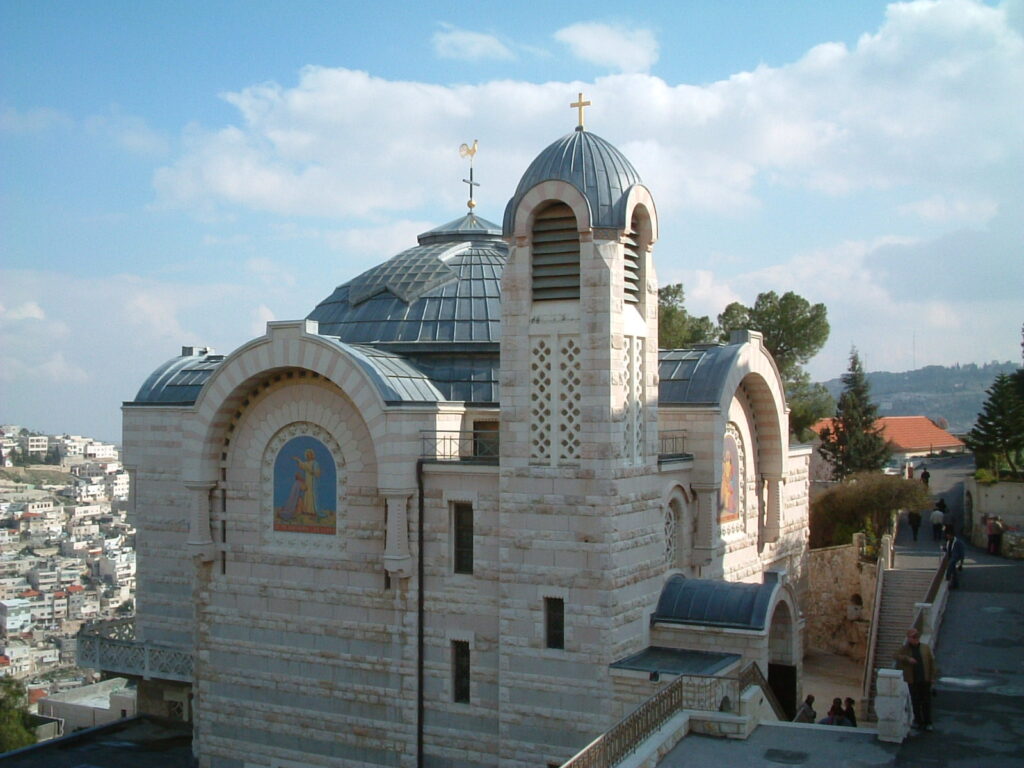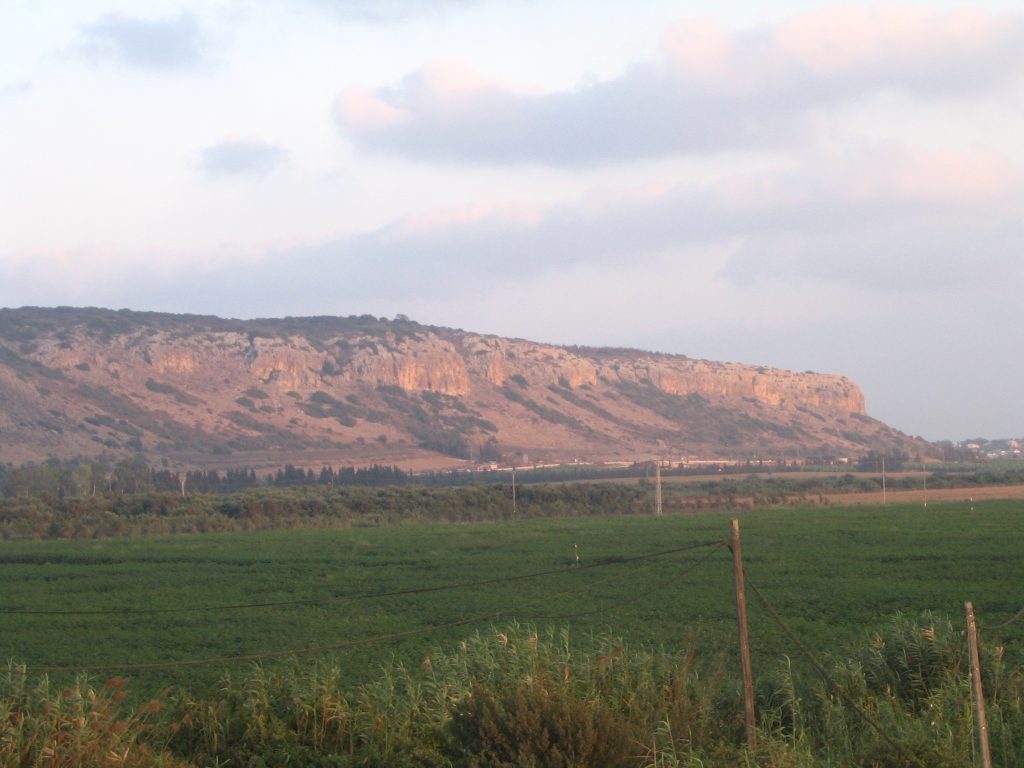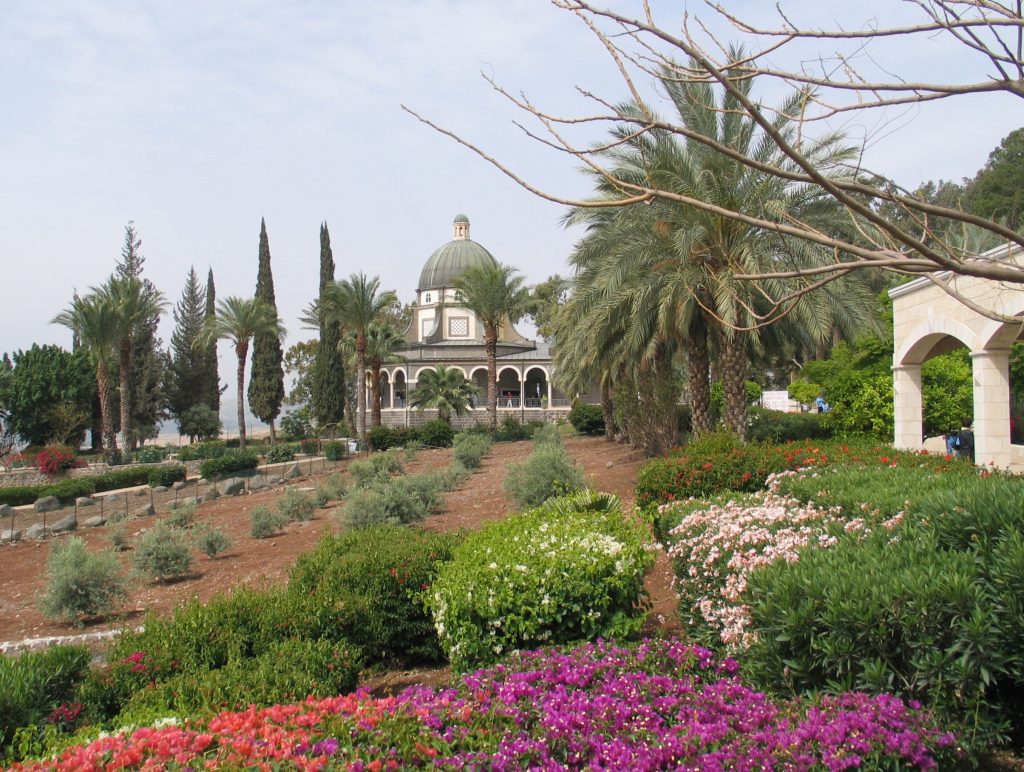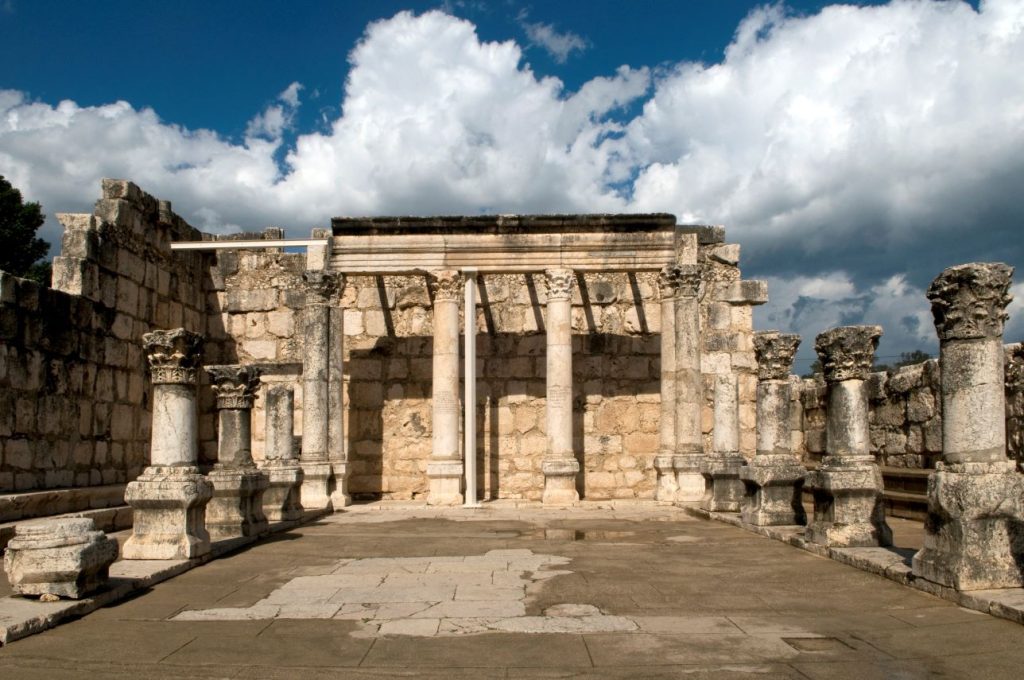Nestled on the slopes of Mount Zion, overlooking the city of Jerusalem, stands the Church of St. Peter in Gallicantu, an enduring monument to the Apostle Peter’s threefold denial of Christ (Matthew 26:69-75), and his subsequent redemption. The name “Gallicantu” translates to “cock’s crow,” referencing the biblical account of Peter denying Christ three times before the rooster crowed.
The church’s strikingly modernist architecture, constructed in 1931, invites visitors into a space dedicated to remembrance, repentance, and restoration. The sanctuary showcases striking mosaics depicting scenes from Jesus’ passion, including Peter’s denial and the Last Supper.
Beneath the church, visitors can explore a labyrinth of ancient caves and dungeons. It is believed that these may have been part of the High Priest Caiaphas’ house, where Jesus was imprisoned on the night of his arrest (John 18:24). It is here that Peter, overcome by fear, denied knowing Jesus, an act he would later bitterly regret.
In the courtyard, a golden rooster atop a black cross serves as a stark reminder of Peter’s denial. Yet, it is also a symbol of hope, representing Peter’s ultimate redemption and his unwavering faith following the Resurrection.
St. Peter in Gallicantu is not just a place of historical and religious significance. It’s a testament to the Christian message of forgiveness and redemption, serving as a poignant reminder that even in our weaknesses, we are offered second chances.
Bible Verses:
- Matthew 26:69-75, describing Peter’s denial of Jesus and the crowing of the rooster.
- Luke 22:54-62, another account of Peter’s denial.
- John 21:15-19, depicting Jesus’ reinstatement of Peter after the Resurrection.
- John 18:15-18, 25-27, providing a detailed account of Peter’s denial.
- Acts 2:14-41, showcasing Peter’s bold sermon on the day of Pentecost, demonstrating his transformation post-resurrection.





